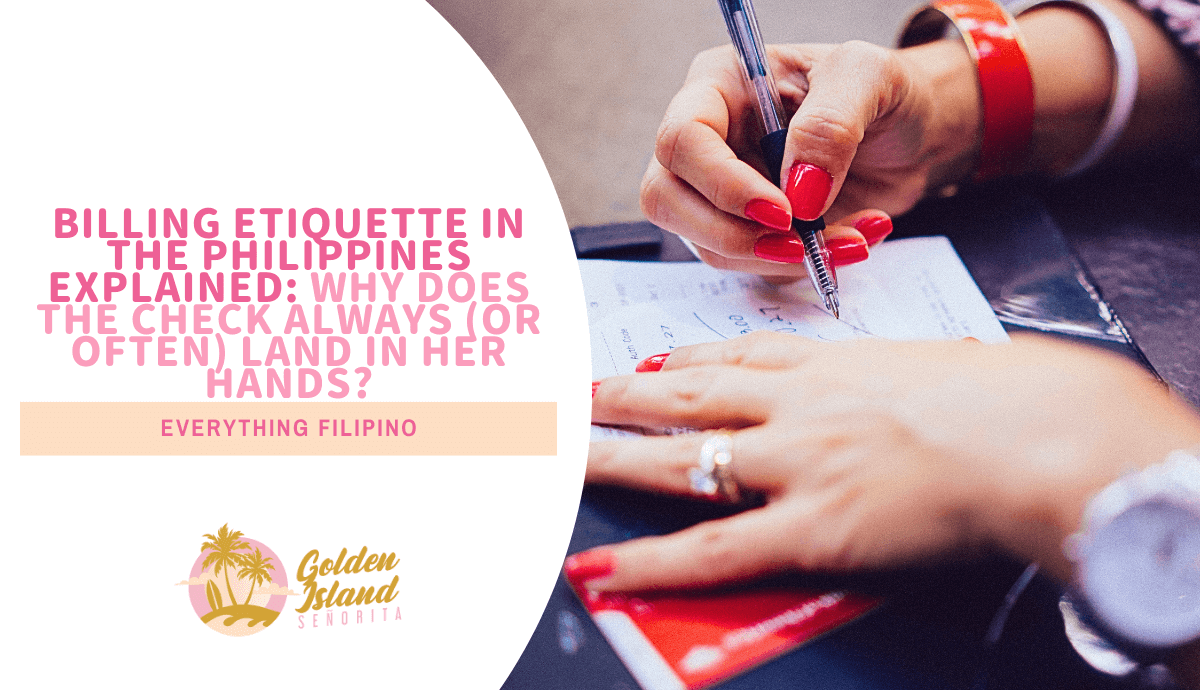So you’ve just savored a delicious meal with your loved ones, the laughter and chatter still lingering in the air. As the final plates are cleared away, someone, usually the man at the table, takes it upon himself to settle the bill. But hold on a moment! Despite his earnest efforts to flag down the waitstaff and request the check, somehow it ends up in the hands of his female companion. What’s going on here?
Welcome to the captivating realm of Filipino billing etiquette, where the act of paying takes on a fascinating cultural twist. It’s a phenomenon that has puzzled many, including myself, and spurred a journey of exploration into the reasons behind this intriguing tradition.
First and foremost, let’s debunk any misconceptions: this has nothing to do with misandry, misogyny, or any form of discrimination. Instead, it’s a reflection of the traditional gender roles and financial dynamics within Filipino households. In the rich tapestry of Philippine culture, it’s often assumed, or even expected, that women are the ones who wield financial control, both at home and sometimes even in social settings.
Picture this scenario: while the husband may be the primary breadwinner, it’s typically the wife who manages the household finances with finesse. She’s the one who meticulously tracks expenses, ensures bills are paid punctually, and maintains financial order within the family unit. Essentially, she plays the role of the chief financial officer, holding significant sway when it comes to matters of money.
So, when the time comes to settle the bill at a restaurant, it’s no surprise that the waitstaff instinctively hands it to the woman. After all, she’s perceived as the one who will carefully review the charges, calculate the tip, and handle the payment. This subtle yet deeply ingrained social norm has been passed down through generations, woven into the very fabric of Filipino society.
But what about those instances where the man gallantly signals for the bill, only to find it landing in the lap of his female companion? I’ve personally experienced this scenario, whether dining with family, friends, or my amused French partner. Despite his best attempts at mastering the art of the check-requesting hand signal (which never fails to elicit a chuckle from the waitstaff), the outcome invariably remains the same: the bill ends up with me.
It’s important to understand that this isn’t a deliberate snub or a calculated act of exclusion. Rather, it’s a reflection of the cultural intricacies that shape our perceptions of gender roles and social interactions. In a country where reverence for elders, hospitality, and social harmony reign supreme, these unspoken rules govern our conduct, even in the seemingly mundane act of settling a restaurant tab.
So, what can we glean from this fascinating insight into Filipino billing etiquette? Firstly, it’s essential not to take it personally if the check lands in unexpected hands. It’s not a reflection of your worth or financial responsibility but rather a manifestation of cultural norms at play. Secondly, embrace the delightful quirks and idiosyncrasies that make dining out in the Philippines a truly unique experience. And finally, the next time you find yourself immersed in the joyful chaos of a Filipino meal, take a moment to savor the rich tapestry of traditions that infuse our culinary adventures with flavor and charm.
In conclusion, while the mystery of why the check always seems to find its way into her hands may remain unsolved, one thing is certain: billing etiquette in the Philippines is a captivating amalgamation of tradition, culture, and social dynamics that enriches every dining experience. So, the next time you reach for the bill, do so with a smile and a sense of curiosity, knowing that you’re participating in a time-honored ritual that embodies the essence of Filipino hospitality.

